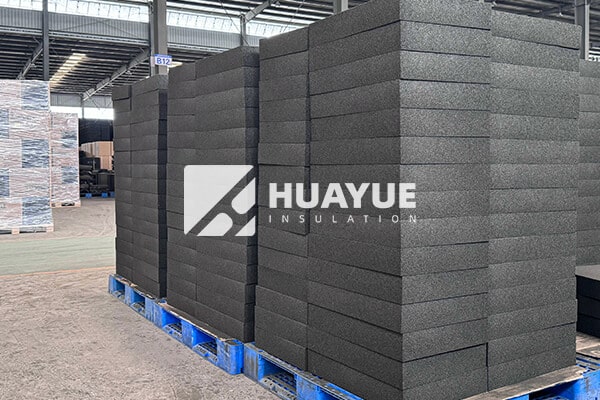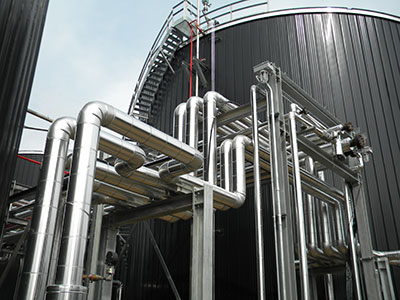A sudden price hike can disrupt your project budget and cause confusion about product quality. It’s a common worry for industrial buyers like us.
The price of cellular glass insulation depends on factors such as density, thickness, supplier location, certifications, and the scale of your order. For most standard projects, expect the range to be $200-$400 per cubic meter from reputable suppliers in mainland China.

If you are responsible for sourcing insulation for industrial tanks, price is not the only factor. Reliable, certified products may cost more, but choosing them can prevent future maintenance headaches.
I have managed procurement for over two decades, and I always prioritize certified suppliers with stable pricing and transparent quotes. Cheap insulation often leads to higher life cycle costs, including replacement, downtime, and labor.
Quality standards and reliable delivery, especially from suppliers with ISO and CE credentials, are my non-negotiable requirements. Selecting products from manufacturers located near advanced ports also helps streamline logistics and control landed costs.
Let’s look deeper at why cellular glass insulation stands out in the marketplace and how its price reflects its unique value.
What is cellular glass insulation used for?
Replacing failed insulation around tanks, pipes, or roofs can lead to expensive project delays. I’ve seen multimillion-euro investments at risk because someone chose the wrong material.
Cellular glass insulation is used for thermal insulation of tanks, pipes, chemical plants, cryogenic facilities, and building roofs where non-absorption, fire resistance, and long-term durability matter most.

I use cellular glass insulation when water absorption and fire risk are critical concerns. For chemical storage tanks, cellular glass prevents corrosion under insulation (CUI) and never absorbs liquid.
This makes it ideal for harsh industrial environments. In cryogenic tanks storing liquid nitrogen or oxygen, cellular glass performs well at very low temperatures, maintaining stability and insulation performance. The material doesn’t deform or rot over decades of use. In building envelopes, cellular glass delivers both fire safety and energy efficiency.
I have also used it to insulate high-temperature steam lines and equipment in power plants. Its versatility across sectors—chemical, petrochemical, energy, and commercial buildings—is impressive. This is why it commands a higher price but often delivers the lowest total cost when lifetime performance is considered.
What is the temperature range for cellular glass insulation?
A wrong insulation choice can lead to thermal leaks, fire hazards, or even tank failure—I’ve seen it happen and it’s disastrous.
Cellular glass insulation operates in a very wide temperature range, from -196°C (cryogenic conditions) to +430°C (high-temperature environments), making it suitable for most industrial and building applications.

I have specified cellular glass insulation for both arctic and high-heat installations. At cryogenic temperatures, cellular glass remains totally stable, unlike foams that can crack or shrink.
In petrochemical plants, steam lines often run at over 400°C, and cellular glass insulation does not release smoke, melt, or lose structural integrity. Its closed-cell structure means it simply doesn’t change, regardless of the climate or process stress.
I once managed an upgrade of an LNG terminal where we replaced old insulation with cellular glass, and the temperature performance was flawless throughout hundreds of meters of piping. For harsh climates or demanding industrial requirements, few materials offer this kind of safety and consistency.
What are the pros and cons of foam glass wool insulation?
Choosing insulation with hidden weaknesses like water absorption or poor load-bearing capacity can add risk and long-term cost to your project.
Foam glass wool insulation offers outstanding fire resistance, zero water absorption, and superior compressive strength, but it can be more expensive and less flexible than traditional mineral wool.
Foam glass wool insulation delivers total peace of mind for critical tank installations. On the plus side, the material won’t burn—it is totally non-combustible and does not release toxic gas. It resists water, chemical attack, and insects, so it lasts longer with minimal maintenance.
The high compressive strength means it supports heavy tanks without compacting or warping. On the downside, foam glass wool insulation is heavier, making installation slightly more labor-intensive.
It is also less mainstream, so there may be fewer suppliers and less flexibility in shapes compared with mineral wool. Price is higher, but when I compare the total lifecycle cost—including downtime, repairs, and fire risk—foam glass wool is my preferred choice for chemical and cryogenic tanks. I always discuss these trade-offs with my team and weigh the importance of safety over short-term expense.
Conclusion
Cellular glass insulation costs more upfront, but its unique benefits—fire safety, water resistance, and long-term durability—justify the investment in critical industrial applications.

